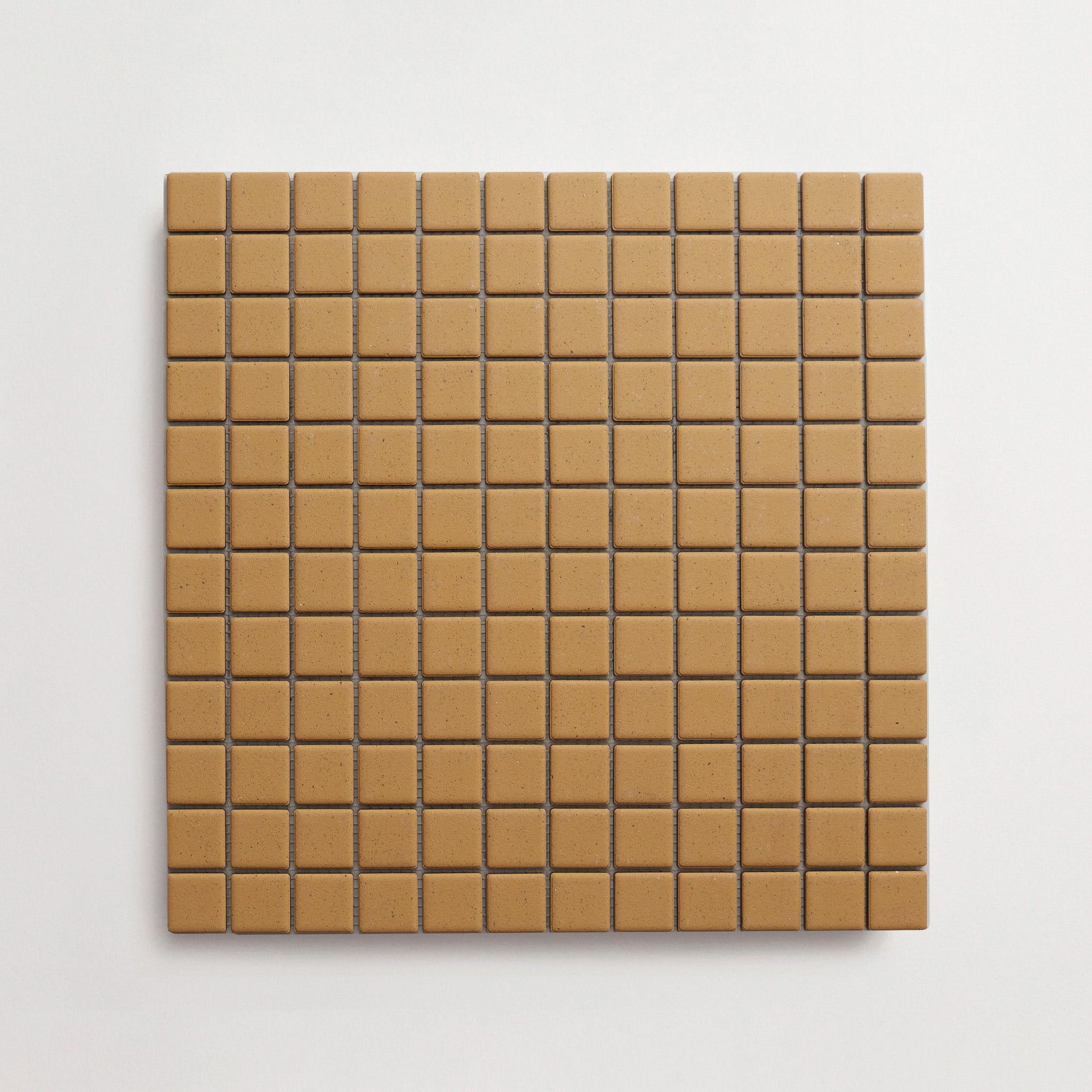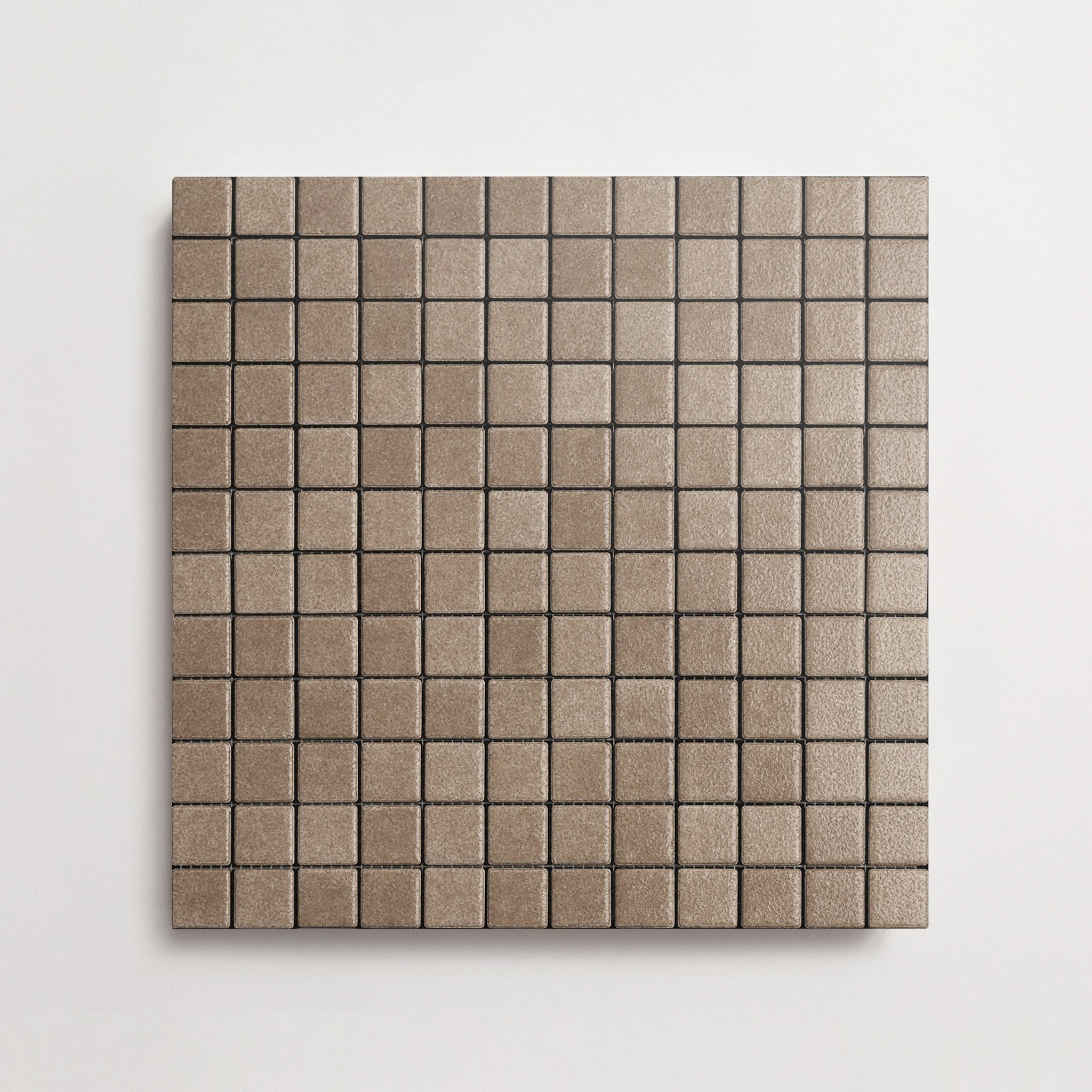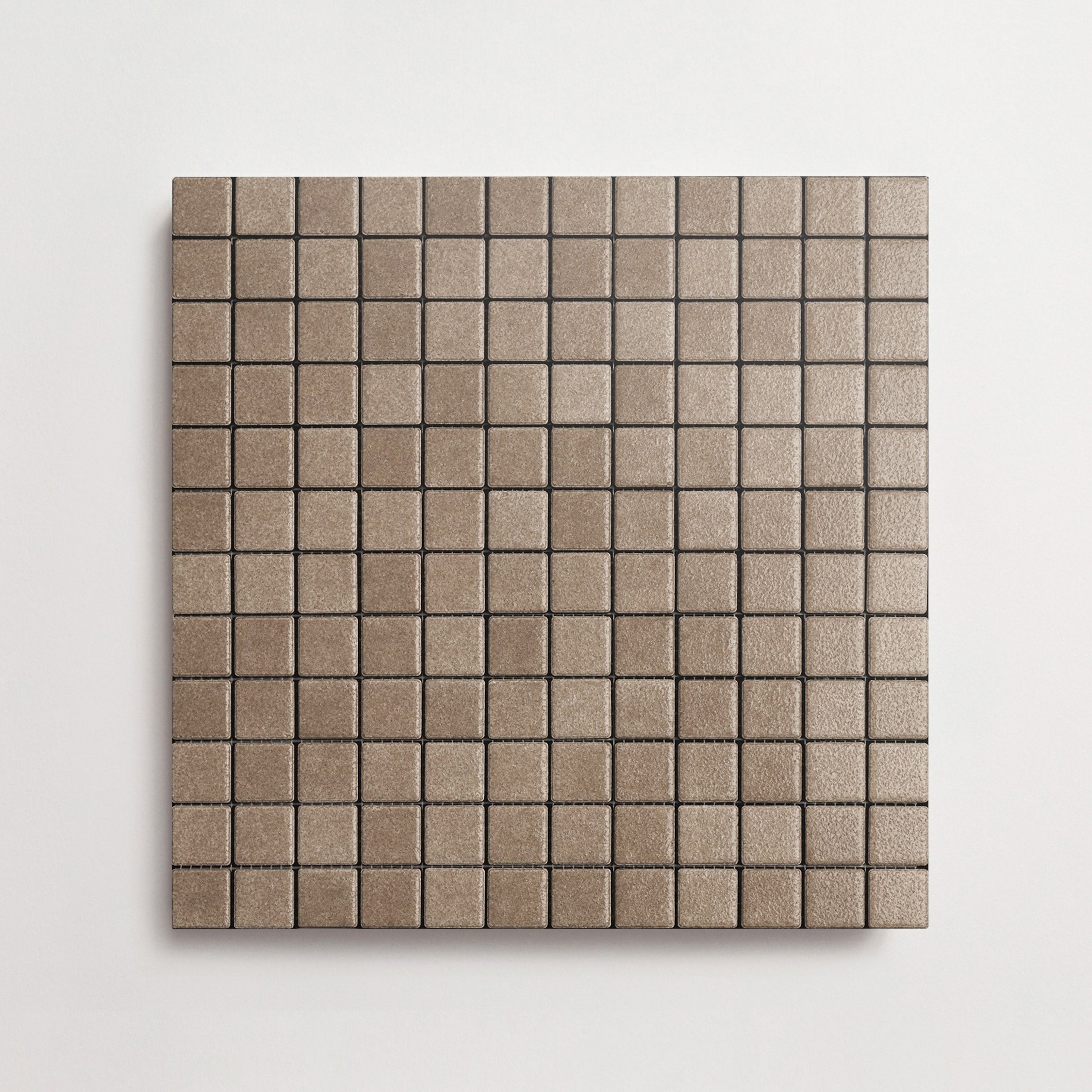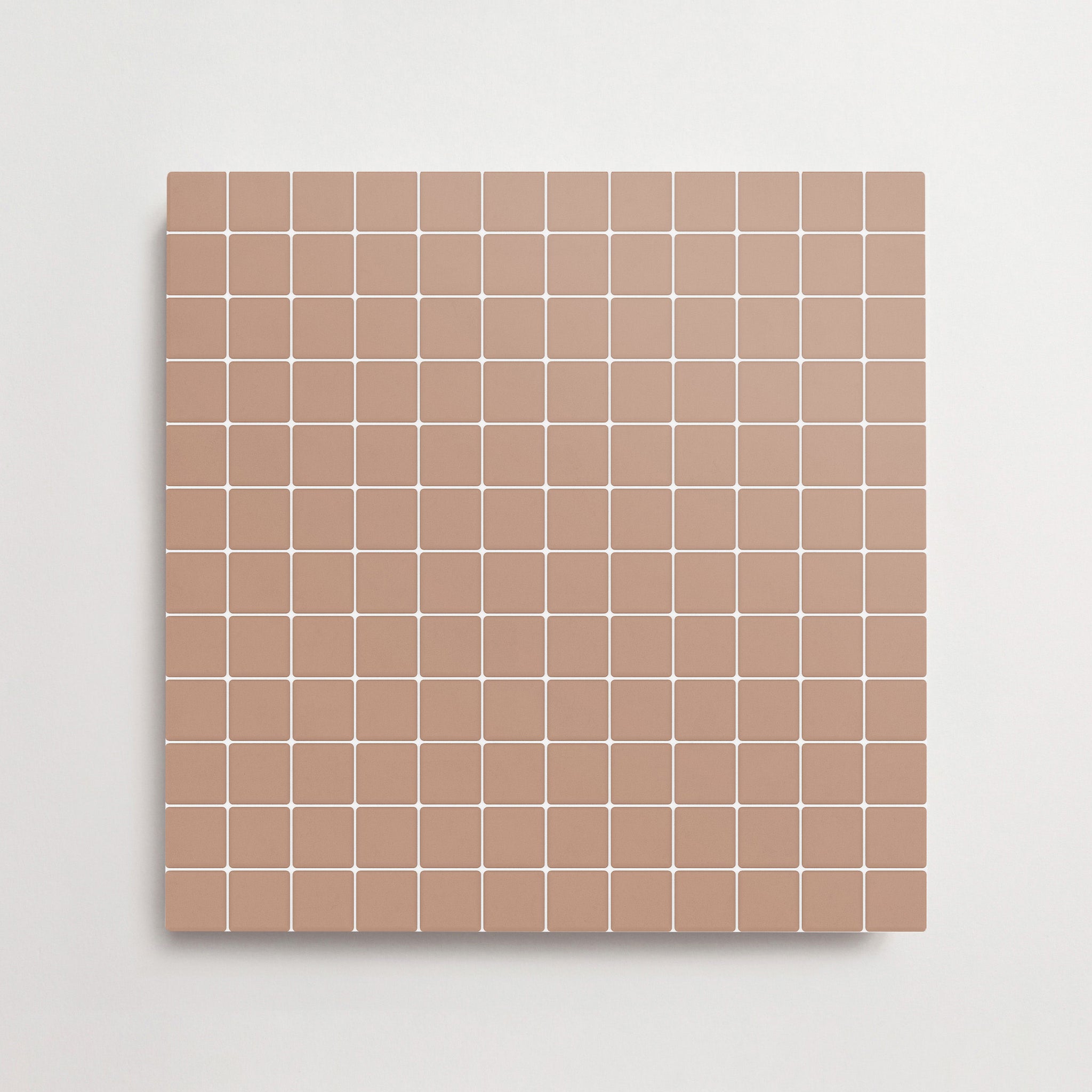your shopping cart is empty.

OUTERclé Colorwerks Collection
Is Porcelain Tile Good for Outdoor Patios?
Many homeowners who are planning to renovate their patio start with the question: Is porcelain tile good for outdoor patios? As designers and architects well know, porcelain tile can be an excellent choice for outdoor patios thanks to its durability, low maintenance, and design versatility.
Of course, the success of a porcelain tile patio depends on selecting the right finish, proper installation, and matching the tile to the environment. With careful planning, though, porcelain can create beautiful, long-lasting patio spaces that stand up to the elements. Let’s dive deeper, shall we?
The Pros of Using Porcelain Tile Outdoors
Porcelain tile combines the best of both performance and beauty. For outdoor patios, it offers superior resistance to moisture, stains, and fading while maintaining design flexibility. Whether you’re planning a sleek modern terrace or a natural, earthy courtyard, porcelain provides a range of options that balance practicality with timeless style.
Weather Resistance and Durability
Porcelain’s density makes it exceptionally resistant to rain, frost, and heat — ideal for climates with fluctuating temperatures. It withstands higher temperatures and intense sun exposure without warping or fading, as well. Unlike softer materials, porcelain’s surface doesn’t easily scratch or chip, ensuring the patio maintains its elegant finish through years of seasonal change.
Slip Resistance and Safety Options
Safety is a key concern for outdoor surfaces, especially floors. Many porcelain tiles are engineered with slip-resistant finishes, often labeled as grip, matte grip, or anti-slip. To ensure security in wet conditions — especially near pools, entryways, or shaded areas where moisture tends to linger — look for a tile with an appropriate slip rating.
Visual Versatility: Colors, Finishes, and Patterns
Porcelain tile’s versatility shines in its design range. Available in a variety of colors, patterns, and finishes, it can fit seamlessly into environments with natural stone, concrete, or wood. Whether matte, textured, or polished, porcelain allows for cohesive styling across patios, walkways, and pool decks, complementing virtually any architectural vision.
Low Maintenance Appeal
For homeowners and designers alike, porcelain’s low-maintenance nature is a major advantage. Its non-porous surface resists stains, mold, and mildew, requiring only occasional sweeping and mild detergent cleaning. Compared to porous materials like terracotta and cement, porcelain offers lasting beauty with minimal upkeep, making it a solid choice for busy outdoor spaces.
The Limitations of Outdoor Porcelain Tile
While porcelain tile is a perfect choice for many patios, it isn’t without limitations. Proper installation and product selection are critical to ensure performance. Some challenges like installation complexity, surface slipperiness, or misunderstanding tile ratings can lead to issues if not carefully addressed during planning and execution.
Installation Complexity and Substrate Requirements
Porcelain’s strength also makes it unforgiving if installed incorrectly. Outdoor patios require a stable substrate with proper drainage and expansion joints to prevent cracking. Because porcelain doesn’t flex, even minor substrate movement can cause damage. For best results, you must partner with an experienced professional tile setter to ensure structural integrity and longevity.
Potential for Slipperiness Without the Right Finish
Not all porcelain surfaces are created equal. A glossy tile that looks stunning indoors may become dangerously slick when wet outdoors. Always specify non-slip outdoor tiles that are rated specifically for exterior use, especially in areas that will be exposed to rain or pool water. Surface texture is key to safety and usability year-round.
Misconceptions About “One-Size-Fits-All” Outdoor Tiles
A common misconception is that any porcelain tile can be used outside. In reality, tiles are rated for specific applications. For exterior patios, look for frost-resistant, low-absorption porcelain with a PEI rating that is suitable for heavy foot traffic. Selecting the correct types of outdoor tiles ensures both performance and design consistency.
When Porcelain Is the Right Choice—And When It’s Not
Porcelain excels in many outdoor environments, but it’s not always the best material for every project. Understanding how it compares to alternatives like natural stone, cement, and terracotta helps determine which outdoor porcelain tile ideas are good ones — and when another material might provide a better fit for a patio’s aesthetic and climate.
Comparing Porcelain to Natural Stone, Cement, and Terracotta
Natural stone offers organic texture but often requires sealing and maintenance. Cement tiles add handmade character but can stain and crack in cold climates. Terracotta delivers warmth but absorbs moisture. Porcelain, by contrast, balances beauty with performance — it’s durable, frost-resistant, and available in a variety of colors and finishes.
Ideal Use Cases for Outdoor Porcelain Tile
Porcelain performs exceptionally well in covered patios, outdoor kitchens, pool surrounds, and walkways. Its resilience to moisture and temperature swings makes it ideal for transitional spaces where indoor and outdoor elements blend. In these applications, porcelain’s durability and low-maintenance qualities provide both elegance and longevity.
Situations Where Alternatives May Be Better
In extremely rustic settings or projects that emphasize natural irregularity, stone or clay tile may feel more authentic. In areas with frequent freeze-thaw cycles, thicker materials or specialized installation systems might offer greater flexibility. Selecting the best choice depends on balancing function, local climate, and design priorities.

Lido: Soie, ½x½" Confetti, Aquamarine, Gloss. Photo courtesy of Charles Deluvio.
Outdoor Porcelain Patio Tile Ideas for Elevated Design
Beyond performance, porcelain offers endless outdoor design opportunities. With a variety of formats available, it can create modern, natural, or even transitional looks. Whether you prefer the seamless flow of large tiles or the charm of mosaic tiles, porcelain allows you to personalize your outdoor space beautifully.
Large Format Tiles for Seamless Looks
Large format porcelain tiles can visually expand a patio to create a clean, modern aesthetic. Fewer grout lines enhance continuity and make maintenance easier. This style works especially well for modern homes or minimalist landscapes where a smooth, uninterrupted surface feels both luxurious and intentional.
Mixing Colors and Finishes for a Curated Feel
For a more customized look, consider combining porcelain tiles in complementary or contrasting shades. A tone-on-tone layout creates depth without visual clutter, while mixing glossy and matte finishes adds tactile interest. This approach brings a curated, designer touch to outdoor living spaces of any size.
Using Porcelain to Extend Indoor Aesthetics Outdoors
One popular porcelain tile strategy is to carry the same tile — or a coordinating one — from a nearby interior room to the patio. This seamless transition blurs boundaries between indoors and outdoors, expanding the visual space. It’s a particularly strong design move for open-plan homes and hospitality projects that need to have flow and cohesion.
Pairing Porcelain with Natural Materials
Porcelain pairs beautifully with natural textures like gravel, wood, and greenery. For instance, smooth porcelain tiles next to lush garden beds create balance between precision and softness. Combining porcelain with organic materials enhances the outdoor ambience and helps ground a modern design in the natural environment.
Choosing the Best Porcelain Tile for Outdoor Patios
Selecting the right porcelain tile for an outdoor patio requires attention to technical details as much as aesthetics. Factors like finish, frost resistance, and thickness directly impact performance. Understanding these specifications will ensure that you choose the best porcelain tile for your outdoor patio projects.
What to Look for in Outdoor-Ready Porcelain
Outdoor porcelain must withstand weather extremes. Look for tiles with low water absorption (below 0.5%), high PEI ratings for durability, and finishes that provide traction. Frost resistance is essential for colder regions, while UV stability protects color from fading in bright, sun-exposed patios.
Recommended Tile Finishes for Patios
Matte, textured, and grip finishes are the best choices for outdoor porcelain floors. These options combine safety with subtle beauty, reducing slip risk without sacrificing aesthetics. Another option is to specify a smaller tile that is 2 inches by 2 inches or less in size — you’ll have more grouting and therefore more traction.
Freeze-Thaw Zones and Moisture Absorption
In climates with freezing winters, choose porcelain that is specifically rated for freeze-thaw conditions. Because porcelain absorbs minimal moisture, it resists cracking when temperatures drop. Proper installation, including sealed grout lines and drainage, can further prevent water from seeping beneath the tile surface and compromising its structure.
High-Sunlight Areas and UV Resistance
In areas with full sun exposure, porcelain’s UV resistance prevents color fading and surface deterioration. Light-colored tiles stay cooler underfoot, reflecting rather than absorbing heat. This makes porcelain a perfect choice for patios and pool decks located in hot, sunny climates where comfort and longevity matter.
Coastal or Humid Conditions
For coastal or tropical projects, porcelain’s non-porous structure offers superior salt and moisture resistance. It won’t corrode, stain, or develop mildew, even in humid environments. This makes porcelain an excellent choice for seaside patios or poolside terraces where other materials may struggle to withstand marine exposure.
Setting Expectations: Longevity, Care, and Maintenance
When properly installed and maintained, porcelain tile can last for many years or even decades. Its surface resists staining, scratching, and fading better than most other materials. With minimal maintenance and occasional cleaning, porcelain keeps its refined appearance — making it a dependable, long-term investment for outdoor design projects.
What to Expect Over 10+ Years
Over time, porcelain may experience subtle wear from foot traffic or furniture movement, but its color and texture remain remarkably stable. Unlike natural stone, it doesn’t require regular sealing (save for the grout, of course). With correct installation, porcelain’s durability and visual consistency make it one of the most reliable outdoor materials available.
Cleaning and Seasonal Maintenance Tips
Porcelain maintenance is straightforward. Tiles should be swept regularly to remove debris, and occasionally washed with a mild pH-neutral cleaner. It’s also important to avoid harsh chemicals or abrasive brushes that can dull the surface. Seasonally inspecting the grout lines and joints will help preserve drainage and prevent minor issues from developing into costly repairs.
When to Reseal or Replace
Unlike porous materials, porcelain generally doesn’t need sealing. However, if the tile has unglazed edges or textured finishes, a penetrating sealant can add welcome protection. Replacement is rarely required unless tiles are cracked from structural issues. With proper installation, outdoor porcelain can perform beautifully for many years without major intervention.
Final Thoughts: Making the Right Choice for Your Outdoor Space
Porcelain tile’s blend of strength, low maintenance, and aesthetic flexibility makes it a perfect choice for many outdoor patio projects. Whether you seek sleek minimalism or rustic charm, the right type of outdoor tile can elevate your space while offering long-lasting performance. Explore the Colorwerks collection to discover porcelain designs suited for any climate and style.
-
Cuckmere Gold
-
Lido
:
-
Aperto
-
4
" x
-
4
" x
-
⅛
"
-
sqft
/
$
-
French Press
-
Lido
:
-
Florilegium
-
8
" x
-
8
" x
-
⅞
"
-
sqft
/
$
-
Bloomsbury Bloom
-
Lido
:
-
Piatta
-
4
" x
-
16
" x
-
⅝
"
-
sqft
/
$













